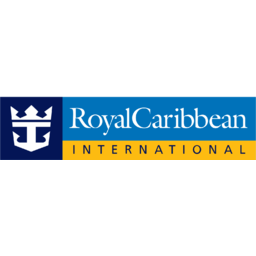
P/E ratio for Royal Caribbean (RCL)
P/E ratio as of April 2024 (TTM): 38.2
According to Royal Caribbean's latest financial reports and stock price the company's current price-to-earnings ratio (TTM) is 38.1927. At the end of 2022 the company had a P/E ratio of -5.84.
P/E ratio history for Royal Caribbean from 2001 to 2023
PE ratio at the end of each year
| Year | P/E ratio | Change |
|---|---|---|
| 2022 | -5.84 | 58.57% |
| 2021 | -3.68 | 33.79% |
| 2020 | -2.75 | -118.5% |
| 2019 | 14.9 | 31.2% |
| 2018 | 11.3 | -27.91% |
| 2017 | 15.7 | 14.7% |
| 2016 | 13.7 | -58.79% |
| 2015 | 33.3 | 38.94% |
| 2014 | 24.0 | 8.64% |
| 2013 | 22.1 | -94.16% |
| 2012 | 378 | 4170.4% |
| 2011 | 8.85 | -52.94% |
| 2010 | 18.8 | -42.74% |
| 2009 | 32.8 | 542.3% |
| 2008 | 5.11 | -65.79% |
| 2007 | 14.9 | 9.42% |
| 2006 | 13.7 | 4.56% |
| 2005 | 13.1 | -42.66% |
| 2004 | 22.8 | -4.41% |
| 2003 | 23.8 | 159.69% |
| 2002 | 9.18 | -25.23% |
| 2001 | 12.3 |
P/E ratio for similar companies or competitors
| Company | P/E ratio | P/E ratio differencediff. | Country |
|---|---|---|---|
 Walt Disney DIS | 91.9 | 140.55% | 🇺🇸 USA |
 Marriott International MAR | 25.7 | -32.59% | 🇺🇸 USA |
 Norwegian Cruise Line
NCLH | -38.0 | -199.55% | 🇺🇸 USA |
 Carnival Corporation CCL | -11.6 | -130.47% | 🇺🇸 USA |
 InterContinental Hotels Group
IHG | N/A | N/A | 🇬🇧 UK |
How to read a P/E ratio?
The Price/Earnings ratio measures the relationship between a company's stock price and its earnings per share. A low but positive P/E ratio stands for a company that is generating high earnings compared to its current valuation and might be undervalued. A company with a high negative (near 0) P/E ratio stands for a company that is generating heavy losses compared to its current valuation.
Companies with a P/E ratio over 30 or a negative one are generaly seen as "growth stocks" meaning that investors typically expect the company to grow or to become profitable in the future.
Companies with a positive P/E ratio bellow 10 are generally seen as "value stocks" meaning that the company is already very profitable and unlikely to strong growth in the future.